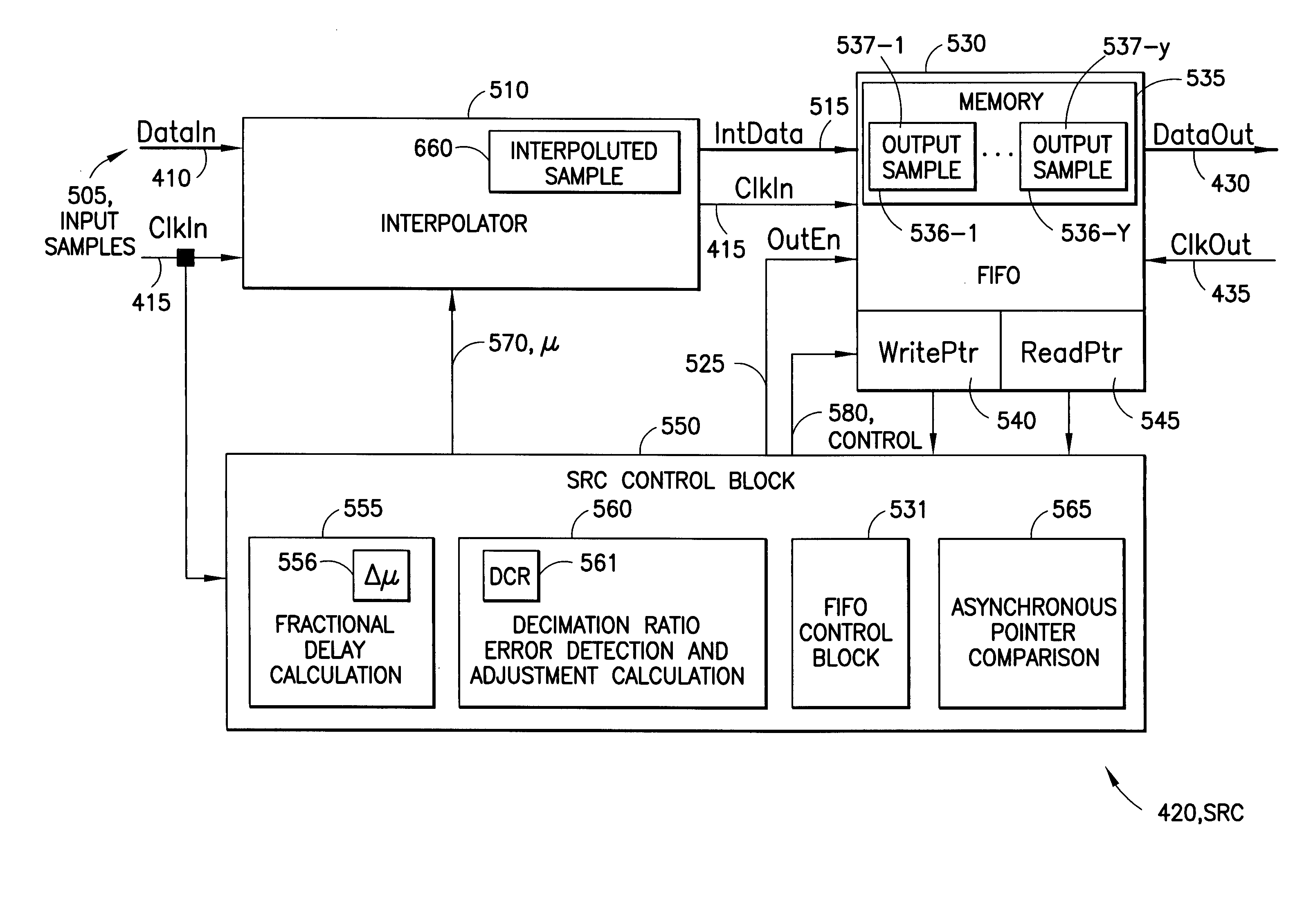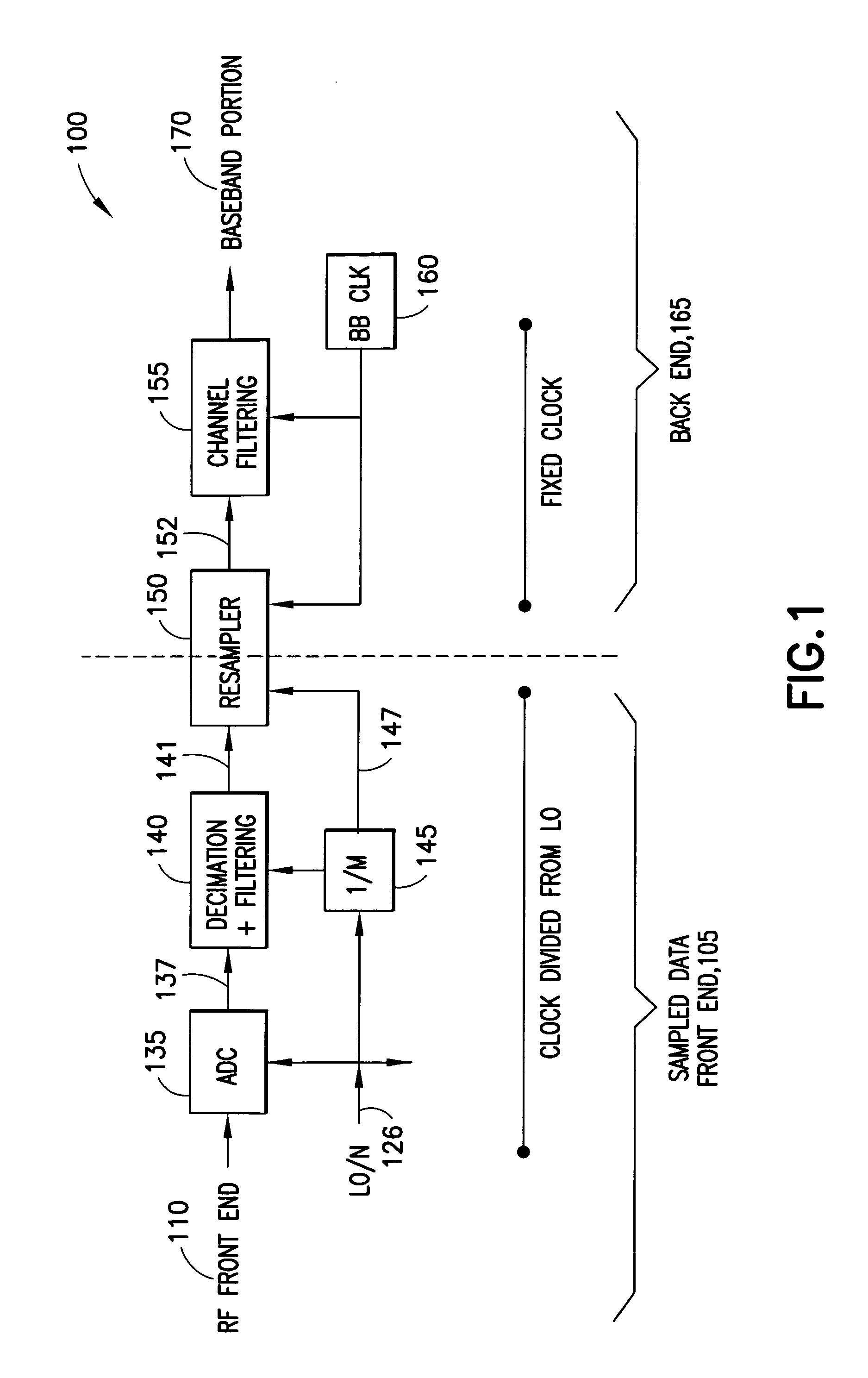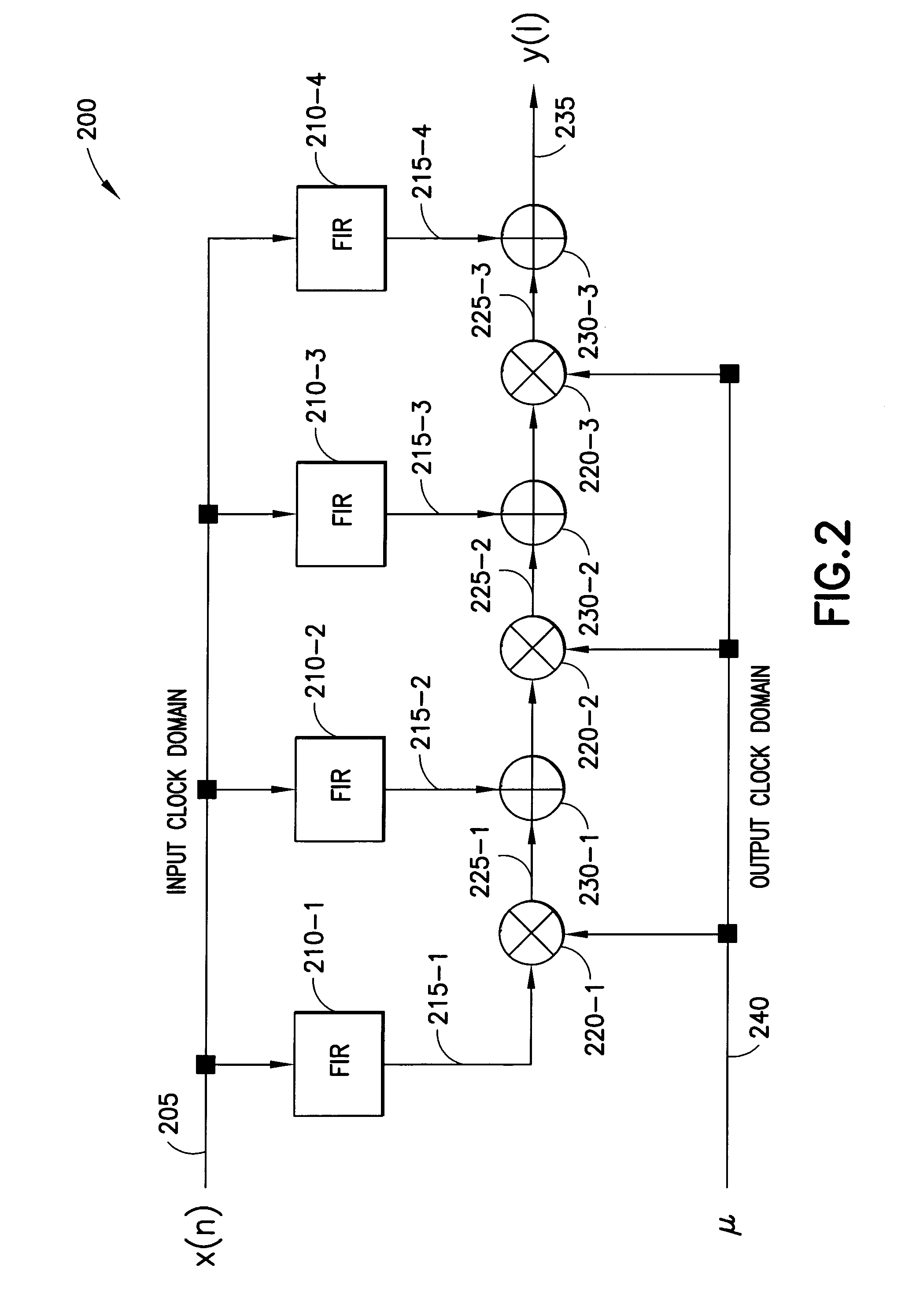Techniques for sample rate conversion
a sample rate and sample technology, applied in the field of digital systems, can solve the problem of far more problematic irrational decimation
- Summary
- Abstract
- Description
- Claims
- Application Information
AI Technical Summary
Benefits of technology
Problems solved by technology
Method used
Image
Examples
Embodiment Construction
[0026]As previously described, decimation is used when a first clock frequency for a first portion of a digital system is higher than a second clock frequency for the second portion of the digital system, and when samples are to be passed from the first to the second portion. Typically, a conversion ratio that defines a relationship between the first and second clock signals is used when determining second samples. The relationship is based on frequencies of the first and second clock signals. Thus, a conversion ratio of 2.0 means that the frequency of the first clock signal is twice the frequency of the second clock signal. The relationship, however, may be any based on other clock information such as period.
[0027]A use for sample rate conversion is typically in communications, where the digital system is a receiver, and there are at least two different use cases for rational and irrational decimation in a receiver. The first and most observable use case of sample rate conversion i...
PUM
 Login to View More
Login to View More Abstract
Description
Claims
Application Information
 Login to View More
Login to View More - Generate Ideas
- Intellectual Property
- Life Sciences
- Materials
- Tech Scout
- Unparalleled Data Quality
- Higher Quality Content
- 60% Fewer Hallucinations
Browse by: Latest US Patents, China's latest patents, Technical Efficacy Thesaurus, Application Domain, Technology Topic, Popular Technical Reports.
© 2025 PatSnap. All rights reserved.Legal|Privacy policy|Modern Slavery Act Transparency Statement|Sitemap|About US| Contact US: help@patsnap.com



